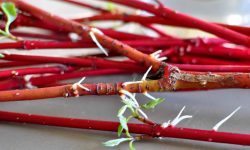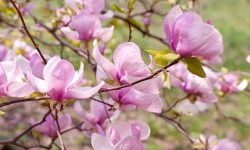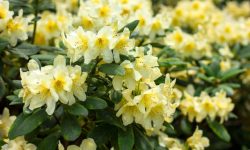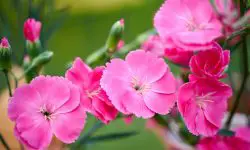How to Propagate Heuchera: Expert Techniques for Vibrant Foliage is a must-read for gardeners seeking to expand their plant collection. Heuchera, also called coral bells, is prized for its colorful, textured leaves and long-lasting blooms. Propagating these perennials allows gardeners to create more plants without purchasing new ones, saving money and maintaining desired varieties. Understanding the best methods and timing for propagation ensures healthy, vigorous plants that thrive in your garden.
Successful propagation requires knowledge of the plant’s growth habits, suitable soil conditions, and proper care. Heuchera can be propagated through division, stem cuttings, or seed sowing. Each method has advantages depending on your goals, available time, and experience. By following expert techniques, gardeners can enjoy lush foliage, vibrant colors, and long-lasting garden displays. Careful attention to watering, sunlight, and fertilization helps new plants establish quickly and maintain their beauty. This guide provides step-by-step instructions, tips, and best practices to achieve consistent success in propagating Heuchera for stunning foliage year after year.
Understanding Heuchera Growth Habits
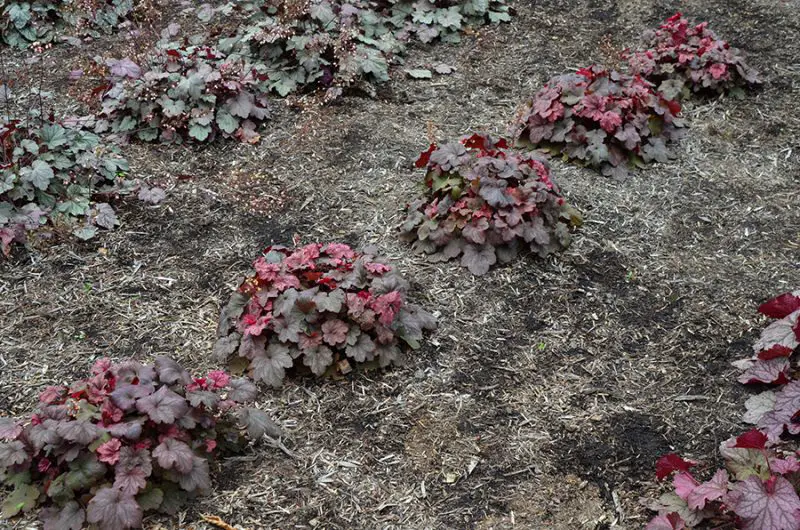
Heuchera, commonly known as coral bells, is a versatile perennial appreciated for its colorful foliage and delicate flowers. Understanding its growth habits is essential for successful propagation and garden care. These plants grow in clumps, producing rosettes of leaves that vary in color from deep burgundy to lime green. The foliage is evergreen in mild climates, providing year-round interest, while in colder regions, leaves may die back in winter. Observing how the plant spreads and develops helps gardeners choose the most effective propagation method.
Heuchera produces thin, wiry stems that bear tiny bell-shaped flowers in spring or summer. While the flowers are attractive to pollinators, they are secondary to the foliage, which is the main ornamental feature. The plant grows best in partial shade, though some varieties tolerate full sun if the soil remains moist. Roots are shallow and fibrous, making the plant sensitive to drought and heavy foot traffic. Recognizing these traits allows gardeners to provide optimal conditions for both established plants and newly propagated ones, ensuring vigorous growth.
The plant’s clumping nature makes it particularly suitable for division, one of the most reliable propagation methods. Each clump can be separated into smaller sections, maintaining the parent plant’s characteristics while creating new specimens. Understanding Heuchera’s seasonal growth patterns, including periods of dormancy and active leaf production, also informs watering, fertilization, and pruning schedules. By carefully observing and adapting to its growth habits, gardeners can maximize the health, vibrancy, and longevity of Heuchera in their gardens, setting the foundation for successful propagation.
Preparing Heuchera for Propagation
Preparing Heuchera for propagation is a crucial step to ensure healthy, vigorous new plants. Begin by selecting mature, disease-free specimens with strong root systems. Healthy parent plants produce more resilient offspring, reducing the risk of weak or stressed seedlings. Examine the foliage for signs of pests, discoloration, or damage, and remove any affected leaves before propagation. This careful selection process helps maintain the aesthetic quality and longevity of the propagated plants.
Next, choose the appropriate time for propagation. Early spring, when new growth begins, is ideal for divisions and cuttings. For seed propagation, collect ripe seeds in late summer or early fall. Preparing the plant at the right stage maximizes rooting success and increases the likelihood of rapid establishment. During this period, reduce fertilization slightly to encourage energy storage in the roots rather than excessive leaf growth, which can hinder propagation success.
Proper tools and materials also play a critical role in preparation. Use clean, sharp knives or shears for divisions and cuttings to prevent damage and reduce infection risk. Prepare well-draining, nutrient-rich soil or propagation medium to support root development. If using seeds, stratify them if required to break dormancy and enhance germination rates. Maintaining consistent moisture without waterlogging and providing indirect sunlight creates an ideal environment for young plants. By carefully preparing Heuchera for propagation, gardeners set the stage for successful growth, vibrant foliage, and long-term garden success, ensuring that each new plant thrives and reflects the beauty of its parent.
Propagation Methods: Division, Cuttings, and Seeds
Division
Division is one of the most reliable methods to propagate Heuchera and maintain the parent plant’s characteristics. This technique involves separating mature clumps into smaller sections, each containing roots and shoots. Early spring or late fall is the ideal time, as the plant is either emerging from dormancy or slowing growth. Begin by gently removing the plant from its pot or garden bed, carefully loosening the soil around the roots. Separate the clump into sections with at least a few healthy leaves and an intact root system.
Once divided, replant each section in well-draining, nutrient-rich soil. Water thoroughly to settle the soil around the roots and provide immediate hydration. Mulching helps conserve moisture and regulate soil temperature while reducing weed competition. Division produces new plants that are genetically identical to the parent, ensuring consistent foliage color and form. Regular care, including watering and partial shade, promotes rapid establishment and vigorous growth. With proper handling, division allows gardeners to expand their Heuchera collection successfully while maintaining healthy, vibrant plants.
Cuttings
Heuchera can also be propagated using stem or leaf cuttings, which is effective for producing multiple plants from a single parent. Semi-hardwood cuttings taken in late spring or early summer generally root most successfully. Select healthy stems with several leaves and cut just below a node using a sterilized, sharp knife. Remove the lower leaves to expose the nodes, which will develop roots in the propagation medium. Applying rooting hormone to the cut end encourages faster root formation and improves success rates.
Plant the cuttings in a moist, well-draining medium, such as a mix of peat moss and perlite. Maintain high humidity by covering the container with a plastic dome or bag while ensuring airflow to prevent mold. Place cuttings in bright, indirect sunlight, avoiding direct heat or harsh afternoon sun. Check moisture levels regularly and remove any decaying leaves promptly. Roots typically form within several weeks, after which the cuttings can be gradually acclimated to outdoor conditions. Cuttings provide a cost-effective propagation method while producing strong, healthy Heuchera plants with the same foliage color and patterns as the parent. Careful attention during this stage ensures robust growth and long-term garden success.
Seeds
Propagating Heuchera from seeds allows gardeners to create multiple plants simultaneously while introducing genetic variation. Collect seeds from mature flowers in late summer or early fall, ensuring full ripeness. Some Heuchera varieties require cold stratification to break dormancy, storing seeds in a moist, cool environment for several weeks. Prepare a well-draining seed-starting mix and lightly press the seeds onto the soil surface without burying them too deeply, as they need light to germinate.
Maintain consistent moisture using a spray bottle and provide bright, indirect light for optimal germination. Seeds can take several weeks to sprout, depending on variety and environmental conditions. Once seedlings develop a few true leaves, thin them carefully to prevent overcrowding and transplant into individual pots. Growing Heuchera from seeds introduces slight variations in leaf color, shape, and texture, creating unique plants for the garden. With careful watering, appropriate light, and protection from pests, seedlings establish successfully and develop into healthy, vibrant clumps. Seed propagation allows gardeners to expand their Heuchera collection, enjoy diverse foliage, and maintain a long-term supply of ornamental plants.
Caring for Newly Propagated Heuchera
Providing Optimal Growing Conditions
Newly propagated Heuchera requires careful attention to soil, light, and moisture. Start by planting divisions, cuttings, or seedlings in well-draining, nutrient-rich soil to prevent waterlogging and root rot. Partial shade is ideal for most varieties, as direct sunlight can stress young plants and scorch tender leaves. Maintain consistent soil moisture, checking regularly to ensure it remains damp but not soggy. Avoid letting the soil dry completely, as this can stunt root development and reduce plant vigor.
Temperature and humidity also influence early growth. Young Heuchera benefits from moderate temperatures and protection from harsh winds or sudden temperature swings. Mulching around the base helps retain soil moisture, moderates soil temperature, and suppresses weeds. Avoid heavy fertilization at this stage; a light, balanced fertilizer encourages steady growth without overwhelming young roots. Proper placement and environmental care reduce transplant shock and create ideal conditions for root and leaf development. By maintaining optimal growing conditions, gardeners lay the foundation for robust, healthy Heuchera that will thrive in the long term.
Monitoring and Protection
Monitoring newly propagated Heuchera for pests, diseases, and environmental stress is essential. Aphids, slugs, and fungal infections can quickly damage young plants. Inspect leaves and stems regularly, removing any damaged or infected parts immediately. Organic pest control, such as neem oil or physical barriers for slugs, helps prevent infestations. Good air circulation around plants reduces humidity-related fungal issues, while avoiding overhead watering minimizes leaf wetness and disease risk.
Gradual acclimation to outdoor conditions strengthens resilience. Begin by exposing seedlings or cuttings to outdoor light and air for short periods each day, gradually increasing exposure over a week or two. This hardening-off process allows the plants to adjust to sunlight, temperature changes, and wind without stress. Continue monitoring soil moisture and adjust watering as needed. With consistent care, young Heuchera establish strong roots, vibrant foliage, and steady growth. Protective measures and attentive observation during this early stage ensure long-term success, creating healthy plants capable of thriving in any garden environment.
Soil Preparation and Amendments
Proper soil preparation is the foundation for healthy Heuchera growth and successful propagation. Heuchera prefers well-draining soil that prevents waterlogging, which can damage delicate roots. Begin by clearing the garden bed or container of weeds, rocks, and debris. Loosen the soil to a depth of at least 12 inches, ensuring that roots have space to expand freely. Incorporating organic matter such as compost, leaf mold, or well-rotted manure improves soil structure, fertility, and moisture retention. These amendments also stimulate beneficial microbial activity, which supports strong root development and overall plant health.
Adjusting soil pH is crucial for optimal Heuchera growth. The plant thrives in slightly acidic to neutral soil, ideally between 6.0 and 7.0. Conduct a soil test before planting to determine any necessary adjustments. If the soil is too alkaline, add sulfur or peat moss gradually to lower the pH. For overly acidic soils, incorporate lime to raise the pH to suitable levels. Proper pH ensures that nutrients are available and easily absorbed by the roots, supporting healthy foliage and robust growth. Mulching around the base of the plant helps retain moisture, regulate soil temperature, and suppress weeds.
Fertilization complements soil preparation by providing essential nutrients for long-term vigor. Apply a balanced, slow-release fertilizer at planting time or during the early growing season to encourage steady growth without overwhelming young roots. Avoid over-fertilizing, as excessive nutrients can cause weak or overly lush leaves susceptible to pests and diseases. With well-prepared soil, proper pH adjustment, and careful fertilization, Heuchera establishes quickly and thrives. These steps create a strong foundation, ensuring vibrant foliage, healthy root systems, and a resilient, long-lasting garden display.
Best Practices for Long-Term Heuchera Care
Maintaining Heuchera over the long term requires consistent attention to light, soil, and water conditions. These perennials thrive in well-draining, nutrient-rich soil with slightly acidic pH. Partial shade is ideal for most varieties, as too much direct sunlight can scorch leaves and reduce vibrancy. Regular watering keeps the soil consistently moist but not waterlogged, as overly wet conditions can lead to root rot. During hot or dry periods, supplemental watering helps maintain healthy foliage and encourages steady growth throughout the growing season.
Fertilization supports long-term vigor and vibrant leaf color. Apply a balanced, slow-release fertilizer in early spring to provide essential nutrients and encourage new growth. Avoid excessive fertilization, which can cause weak, overly lush leaves prone to disease and pests. Mulching around the base of each plant conserves moisture, suppresses weeds, and regulates soil temperature. Removing dead or damaged leaves also helps maintain plant health and reduces the risk of fungal infections. Proper pruning of flower stalks encourages continued bloom and redirects energy to foliage development.
Regular monitoring for pests and diseases ensures Heuchera remains healthy year after year. Common issues include aphids, vine weevils, and powdery mildew. Early detection and prompt treatment are crucial to prevent widespread damage. Companion planting with shade-tolerant species like ferns or hostas can enhance garden aesthetics while supporting ecological balance. By following these best practices—appropriate light, watering, fertilization, pruning, and pest management—gardeners can enjoy long-lasting, vigorous Heuchera plants. Healthy plants develop striking foliage, produce consistent blooms, and provide reliable color and texture for years, creating a vibrant, low-maintenance garden display.

